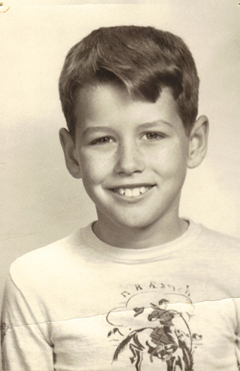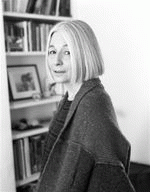Jenny Diski's pieces at the London Review of Books are a goldmine of good writing, intelligence and learning. What they are not, particularly, is "political." So I'm happy to publish them at OpEdNews as reading breaks from most readers' primary subject of interest.
To read a previous OEN piece featuring Ms. Diski's writings, which is a Quick Link, click here.
[This piece by Diski is a review of the book "On Ugliness" edited by Umberto Eco (Harvill Secker, 2007) - note by GLR]
It seems perfectly clear at first glance: beautiful and ugly are straightforward opposites. Beautiful Cinders, ugly sisters. Beauty, the Beast. Dorian, his portrait. So it's not surprising, having commissioned Umberto Eco to write an essay and compile a book of pictures and quotations called On Beauty in 2004, that by 2007 the publishers thought it was time for On Ugliness. (Don't tell me that publishing isn't as easy as falling off a log.) Eco made the beauty book look grand, beginning it with a triumphal line-up of comparative tables picturing thumbnails of Western beauty along a historical timeline. Venus Nude (from Venus of Willendorf 13 BC to Monica Belucci in the Pirelli calendar, 1997); Venus Clothed (Auxerre Lady from Crete, seventh century BC, to Anita Ekberg in La Dolce Vita, 1960); Adonis Nude (a sixth-century Greek statue to Arnold Schwarzenegger in Commando, 1985); Adonis Clothed (2000 BC silver statuette from Aleppo to George Clooney, 2002); Portraits of Adonis (bronze head of Sargon from Akkad 2500-2000 BC to Denis Rodman c.1998 no, I don't know who he is either). In the pages that followed, Eco found an array of pictures to please, excite and rest the eye, and gave a fairly elementary run through of aesthetic theory, chronicling the changing assumptions about what has constituted the beautiful over time. It was a personal take, but there wasn't much to argue with. Schwarzenegger may not be your cup of tea, but you see what Eco means and I suppose Arnie's better than Steven Seagal if a hunk is a must.
It's true, and Eco acknowledges it, that there can only be intelligent guesses about the artifacts that have survived from before the invention of writing. The Venus of Willendorf may have been thought of as beautiful or, just as likely, useful or comical or hideous, or who knows what? Since no one wrote down what they thought when they made or looked at it, we can't be certain. But the guesses are backed up by whole libraries of texts, beginning almost with writing itself, containing theories which define and discourse on the nature of beauty. Even those of us without a proper grounding in aesthetics still understand that beauty is symmetrical, pleasing, fearful even, but quite unproblematic. You know it when you see it. You say, it/she/he is beautiful and you mean it/she/he pleases or ravishes the eye. Of course, if you spent too much time in la-la land you could find yourself saying "that was a really beautiful thing you did'; not nice, but it still connotes fairly simply the positive and uncomplicatedly good. If the goodness of your heart was visible, it would surely look like Audrey Hepburn or Johnny Depp. Even when beauty is "only skin deep' and what you see is not what you get, you can at least be confident that there will be something decent to look at. Sometimes the beautiful is overwhelming Yeats's "terrible beauty', the Sublime and it tips over into more than just a pretty face. But it's not really difficult to grasp the idea of the beautiful.
Ugliness, then, ought to be just as obvious as the not-beautiful; the opposite, the negation of beautiful; the offal vileness beneath the skin; the degenerated picture-in-the-attic; that which offends the eye. What is not pleasing to look at. But even at its most superficial, if you stop to consider it for longer than an instant, ugliness is a much more problematical category than beauty, and perhaps not a category at all. Summon up the faces of friends, colleagues, acquaintances, movie stars, models, strangers you see on the street; you might consider a few of them beautiful. But how many can you think of that you can call ugly? I don't mean plain or mean-looking, wrongly-made or aged, I mean downright plug ugly. Ugly, pure and simple, in the way that the beautiful are beautiful purely and simply. Most of those who come to my mind, I'd call interesting, a word that falls between the simple opposites but makes for worthwhile looking. Generally, people are beautiful, pretty, plain, attractive, unattractive, interesting or unmemorable. Possibly, it's only social convention that prevents me from finding anyone just ugly. But the really ugly is something I want to look at, at least as much as I want to gaze on the beautiful. A view, too, is easily enough defined as beautiful, though you might want to specify wild or landscaped, but even when it's blighted by industrial neglect, catastrophic housing schemes, the aftermath of bombing or the depredations of logging companies, it's not just ugly, so much as desolate, discouraging, alien, as well as, sometimes, weirdly beautiful. A lack of beauty makes greater demands on our powers of description. Ugly is not simply what we recoil from. Beauty is easier, or at any rate, you can offer it as an adjective and people will think they know what you mean. And yet, beauty abounds in theory, while of ugliness in written history there is little more than its description or modeling. As Eco says in this new essay, built like its predecessor around a compilation of words and pictures, there isn't very much in the way of a systematic thought to draw on that specifically deals with ugliness as a subject. Ugliness is something we remark, dismissively, or with pity or disgust, but there's nothing like the analysis that is available for the nature and history of beauty.
(Note: You can view every article as one long page if you sign up as an Advocate Member, or higher).






